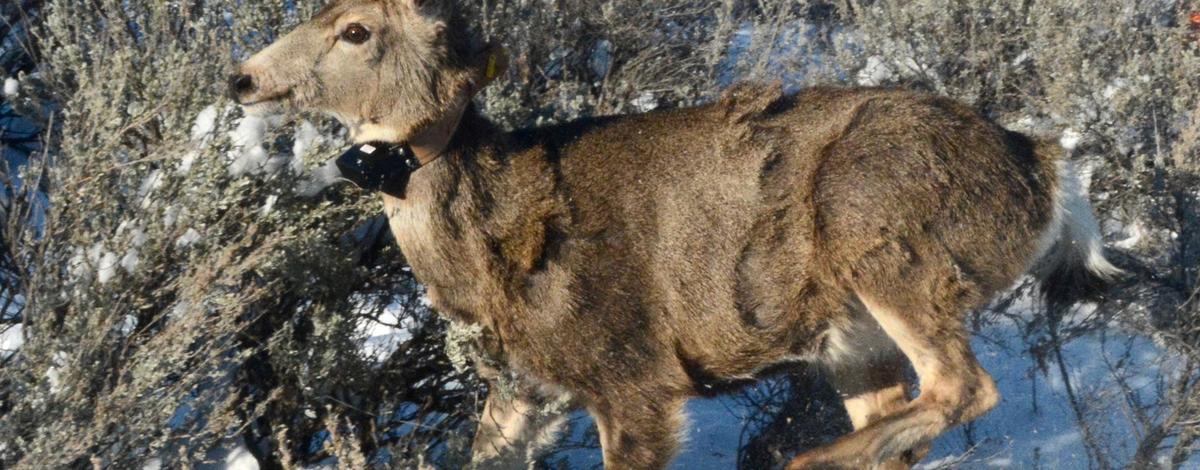Statewide survival of collared mule deer fawns and elk calves was above average through April, which bodes well for hunters: Above-average survival grows herds and provides more young bucks for hunters in the fall. Fish and Game biologists will continue monitoring through May, but traditionally less than 5 percent of the mortalities occur after April.
“In years with milder winters, like the last two we’ve had, we tend to see the number of mortalities drop off in May,” said Toby Boudreau, Deer and Elk Program Coordinator. “We anticipate seeing some additional mortalities by the end of the month, however the statewide survival of mule deer fawns and elk calves is likely to end up being above average this year, barring any unusual events.”
Fish and Game crews and volunteers trap fawns and calves during winter and fit them with telemetry collars that allow biologists to track the young animals through their first winter and early spring.
Statewide, roughly 80 percent of collared elk calves and about 71 percent of mule deer fawns survived through the end of April. That’s a slight increase from 2021, with 77 percent and 64 percent through the same period in 2021.
Mule deer
Fish and Game has been monitoring winter survival of fawns for 24 years. During that time, the average survival of fawns has been 57 percent. If, as anticipated, survival in 2022 continues to track similarly to 2021, it would mark three consecutive years of above-average survival for mule deer fawns statewide, which means one thing: Mule deer herds are growing.
“Fawn weights, which indicate how likely they are to survive winter, were high in many places in southern Idaho when we captured and collared fawns in December and January, and we have so far observed above-average survival,” said Toby Boudreau. “Heavier fawns and mild winters are good for mule deer populations.”
Boudreau added that survival of fawns throughout the state is not uniform, and that it ranges from 10 to 75 percent depending on the unit where the fawns were collared.
Elk
Elk have not been trapped and collared for as long as mule deer, and elk calves typically survive at a higher rate than mule deer fawns. Since researchers began collaring elk calves in 2014-15, survival has ranged from a low of about 52 percent in 2016-17 to a high of 84 percent in 2014-15. The last three years show an increasing trend in elk calf survival rates.
Compared to recent years
Through May 1, roughly 71 percent of collared fawns and 80 percent of collared elk calves were still alive. Here’s how that compares to recent years. The final survival numbers (through May 31) for each year are included in parentheses.
2020-21: Deer 64 percent and elk 77 percent, (Final 61 and 77 percent)
2019-20: Deer 65 percent and elk 77 percent, (Final 63 and 73 percent)
2018-19: Deer 46 percent and elk 77 percent (Final 42 and 69 percent)
2017-18: Deer 61 percent and elk 72 percent (Final 57 and 66 percent)
2016-17: Deer 34 percent and elk 67 percent (Final 30 and 52 percent)
NOTE: Fish and Game deer and elk survival surveys are still ongoing. Final fawn and calf mortality counts will be tallied throughout May and finalized numbers for 2022 will be included in the 2022 Big Game Hunt Outlook.

